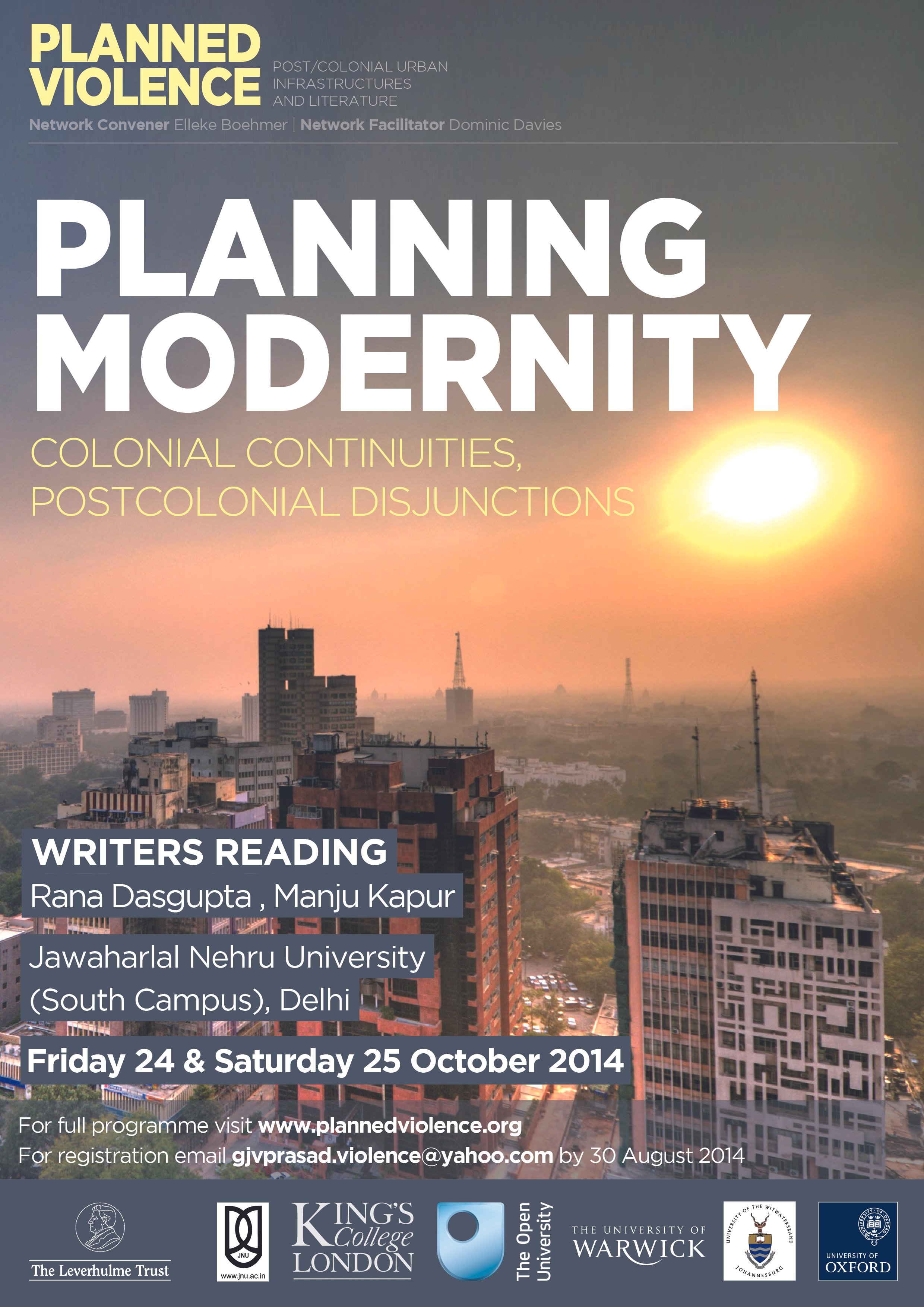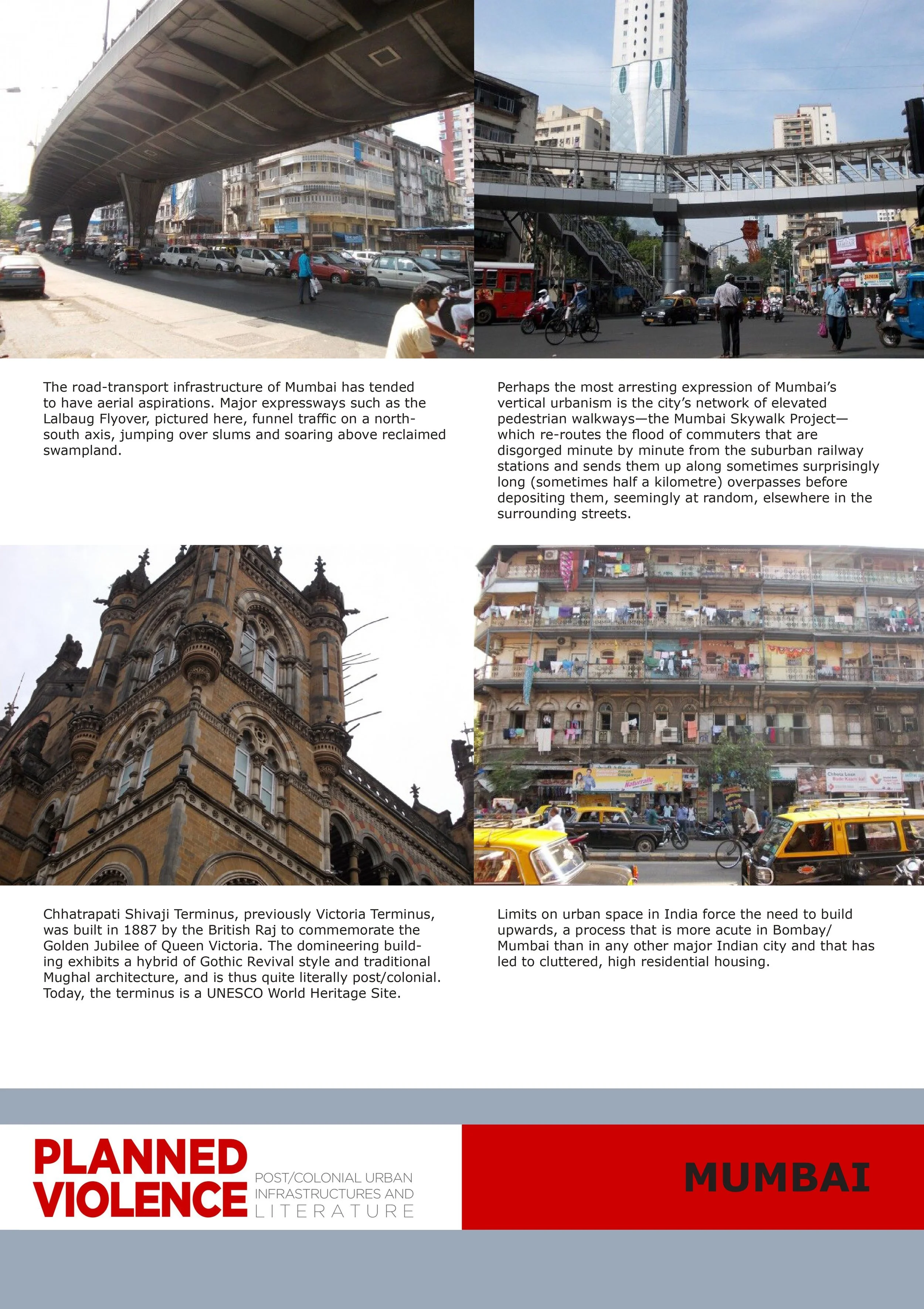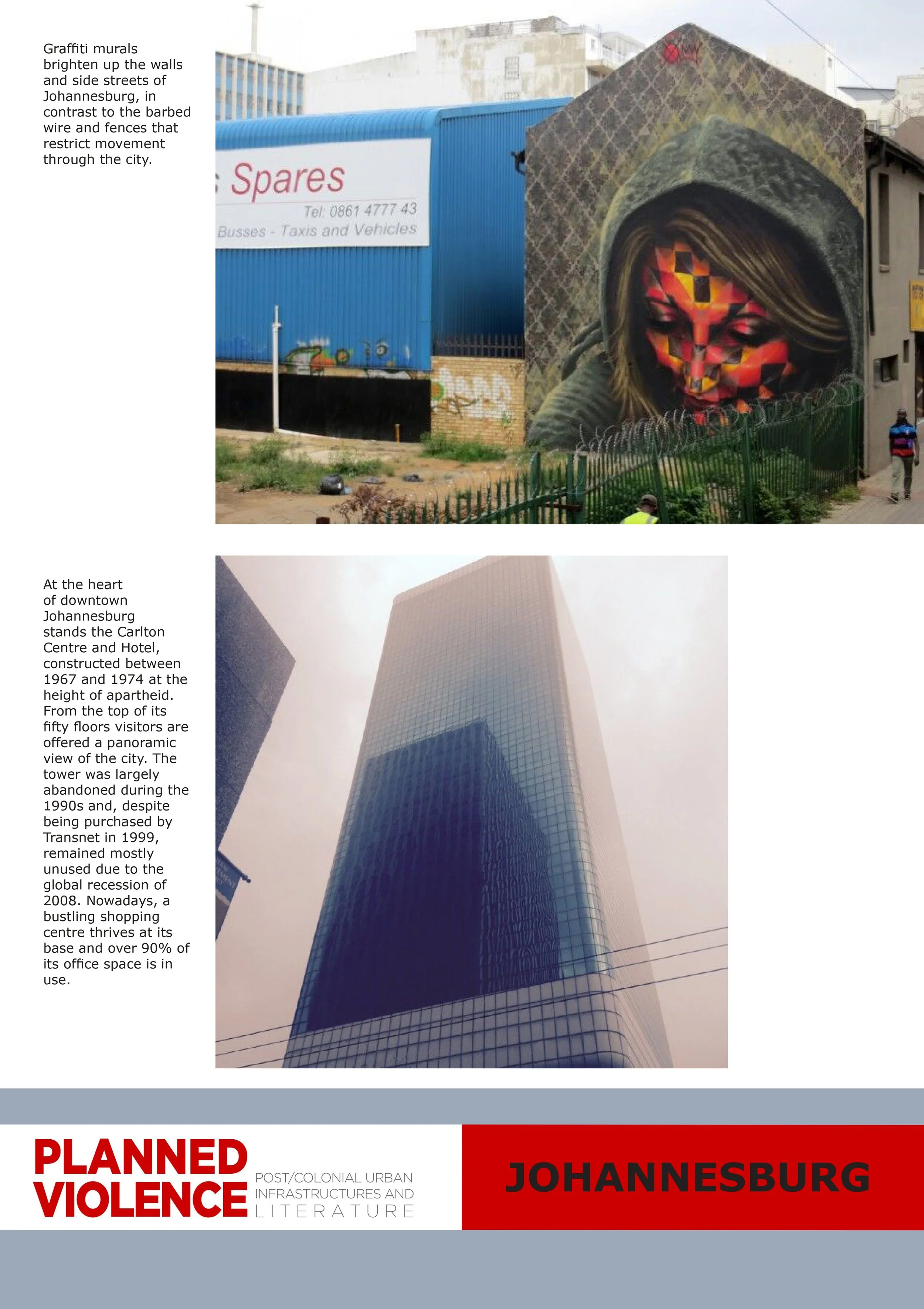
Take a minute to write an introduction that is short, sweet, and to the point.






Planned Violence →
This book brings the insights of social geographers and cultural historians into a critical dialogue with literary narratives of urban culture and theories of literary cultural production. In so doing, it explores new ways of conceptualizing the relationship between urban planning, its often violent effects, and literature. Comparing the spatial pasts and presents of the post-imperial and post/colonial cities of London, Delhi and Johannesburg, but also including case studies of other cities, such as Chicago, Belfast, Jerusalem and Mumbai, Planned Violence investigates how that iconic site of modernity, the colonial city, was imagined by its planners — and how this urban imagination, and the cultural and social interventions that arose in response to it, made violence a part of the everyday social life of its subjects. Throughout, however, the collection also explores the extent to which literary and cultural productions might actively resist infrastructures of planned violence, and imagine alternative ways of inhabiting post/colonial city spaces.
“A compelling read, Planned Violence is also a powerful call to mobilise all our analytical and creative tools to investigate the contemporary urban reality and excavate the forms of planned violence that are inscribed in it. As such, it speaks to scholars of the urban form, of empire, and of contemporary politics at large, beyond the remit of postcolonial literature. Each in its own way, its chapters invite urgent thinking on the tangible ways in which structural violence is enacted in a post/colonial world… With its attention to including creative writing alongside academic contributions, Planned Violence invites us to reflect on how we make use of language to do just that. Echoing a growing concern in the social and human sciences more generally about how we write scholarship, this book provides us with an inspiring example of how this can be done.” – Tatiana Pignon, Full Review →
Contents
Planned Violence: Post/Colonial Urban Infrastructure, Literature, & Culture (Elleke Boehmer / Dominic Davies)
White Cities, Black Streets: Planned Violence & Native Maps in Richard Wrights Chicago and Modikwe Dikobe’s Johannesburg (Loren Kruger)
Grey Space, Tahrir Laser: Conspiracy, Critique, and the Urban in Julie Mehretu’s Depictions of Revolutionary Cairo (Nicholas Simcik Arese)
Thames Valley Royal (or, Maxwell in Oxford): The Story of a Football Club and the History of a City (William Ghosh)
Slums and the Postcolonial Uncanny (Ankhi Mukherjee)
The Not-so-Quiet Violence of Bricks and Mortar (Zen Marie)
Intervention I. What You Find in the River: Isolarion Ten Years On (James Attlee)
The Intimacy of Infrastructure: Vulnerability and Abjection in Palestinian Jerusalem (Hanna Baumann)
Sound Systems and Other Systems: The Policing of Urban Aesthetic Spaces in the Poetry of Linton Kwesi Johnson (Louisa Olufsen Layne)
“Throwing Petrol on the Fire”: Writing in the Shadow of the Belfast Urban Motorway (Stephen O’Neill)
Writing the City and Indian English Fiction: Planning, Violence, and Aesthetics (Alex Tickell)
Blue Johannesburg (Pamila Gupta)
Intervention II. Take Me There (Selma Dabbagh)
“A Shadow Class Condemned to Movement”: Literary Urban Imaginings of Illegal Migrant Lives in the Global North (Ruvani Ranasinha)
“A Dagger, a Revolver, a Bottle of Chloroform”: Colonial Spy Fiction, Revolutionary Reminiscences, and Indian Nationalist Terrrorism in Europe (Ole Birk Laursen)
Detecting World-Literature: (Sub-)Urban Crimes in the Nineteenth Century (Upamanyu Pablo Mukherjee)
Weird Collocations: Language as Infrastructure in the Storyworlds of China Miéville (Terence Cave)
Aquacity Versus Austerity: The Politics and Poetics of Irish Water (Michael Rubenstein)
Intervention III. Control (Courttia Newland)
Afterword (Sarah Nuttall)









